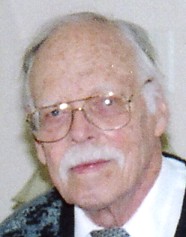Saturday, October 25, 2014
The Forum was a Success
Last Monday, October 20, the Neighborhood Councils of Canoga Park and Woodland Hills sponsored a forum about the Santa Susana Field Laboratory. What led to the forum was the concern by members of both neighborhood councils about the plan to carry out a thorough clean-up of the site by hauling away at least a million cubic yards of dirt that is allegedly polluted and replace it with an equivalent volume of "clean" dirt from another location. This plan would require about ten years and fifty or more truck loads of dirt, each way, along roads in the neighborhoods. There were other concerns besides the truck traffic. By the way, I am a member of the Woodland Hills Neighborhood Council and also a former employee of Rockwell International who spent at least two years working in the SSFL area between 1966 and 1968.
Several of us decided that the plan to haul all the dirt away was just too much. It was unnecessary and impractical. Unnecessary because the site is not badly polluted. Impractical because there is no source of that much dirt that is both "clean" and suited to the terrain of the Field Laboratory.
I realized that the reason for considering such a draconian "clean-up" was public opinion and not objective fact. Public opinion is influenced by articles in local newspapers about a "melt-own" of a prototype sodium-cooled power reactor in 1959. The article compared the incident to the melt-own of large power reactors at Three-Mile Island in Pennsylvania and at Chernobyl in the Ukraine. According to the newspaper account, this accident at SSFL was one of the worst reactor accidents ever. Belief in the truth of the article, people believed that the whole site was highly radioactive and dangerous to be in or near and was the cause of a cluster of cancer cases in the area. Some cancer victims have sued the Boeing Company, who took over the site from Rockwell when that firm got out of the aerospace business. Boeing seems to be willing to admit liability and pay the victim's medical bills, if only to avoid the greater expense of fighting the case in court.
Boeing does, however, offer free tours of the site, if only to show that it isn't dangerous to be there.
The federal department of Energy has published the following statement:
"The U.S. Department of
Energy (DOE) describes the incident that occurred at
SSFL's Sodium Reactor Experiment (SRE) during a two
week period in July 1959 as a core damage accident."
"After the reactor was
successfully shut down, inspection of the damaged elements revealed
that excessive heat in areas of the core that
experienced restricted coolant flow caused some of the uranium
slugs to swell and, where there was metal to metal
contact, diffuse into the stainless steel cladding, forming a
low-melting point uranium/iron alloy. Rupture of the cladding
and formation of the alloy resulted in migration of the
radioactive noble gases krypton and xenon and potentially other
volatile radioactive isotopes into the liquid sodium coolant, which continued to circulate in the
reactor core.
When operators became aware of erratic temperature and
power readings, the reactor was successfully shut down without loss of primary power. The sodium
coolant, though restricted in some channels, continued to immerse and circulate through the reactor
core. However, contrary to what is commonly inferred from the term
“meltdown,” molten uranium fuel did not pool in the bottom of the reactor vessel, and the integrity of the
primary reactor vessel was never in jeopardy."
This statement agrees with what I learned about the incident at the time and what I've read about it in reports by Bob Hart, Frank Fillmore, and Bob Dickenson. The radioactive fission products stayed in the liquid sodium. The sodium was so radioactive that the project couldn't dispose of it, and it was used in the reactor a year later when it was started up again.
Now, there you have it. The accident was not a full-scale melt-own. There wasn't any liquid uranium to clean up. Other projects in the area continued with people working at them, the whole area wasn't polluted at the time, and it was just as safe then as it is now to walk around in the area. I was in the area occasionally and later, after I transferred from Atomics International to Rocketdyne I worked in another building a mile or two from the site of the reactor. I have not yet succumbed to cancer, except for a spot of skin cancer on my right shin.
Whether or not the core damage accident caused the release of sizable quantities of radioactive fission products, one of my friends has pointed out that what happened at Hiroshima and Nagasaki was much worse than even a severe meltdown of a reactor. Radioactivity dies, slowly but surely. Those two cities are thriving today.
There is pollution at SSFL. It's similar to the pollution surrounding a gasoline station or an auto repair garage. Buried gasoline tanks develop leaks. Grease and solvents from the servicing and repair of automobiles get into the soil and down into the ground water. It is good advice to dig your well far from either a gas station or an auto repair shop. Ground water at SSFL contains traces of various chloro-carbon compounds. Some people in the area depend on wells for drinking water. The ground water needs to be cleaned up. There are various ways of cleaning the ground water without hauling away a very large volume of dirt. One way is to pump out the water, filter it or treat it chemically or biologically to remove pollutants, then inject it back into the ground water. This method involves a continuing process.
